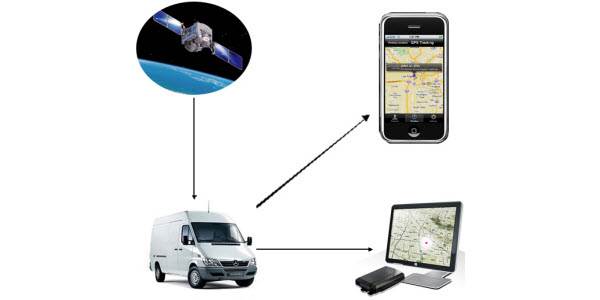
If you want to:
- Track your fleet
- Enhancing safety for your vehicles
- Having a positive impact on driver behaviour
- Increasing Productivity
- Reducing Costs
Simply call us on 1300 486 341 if you want more detailed information on this product or drop into our showroom.

Knowing where your vehicles are and what they are doing is key to managing safety, efficiency and cost our system allows you to see where your vehicles and assets are, how their driving performance presents your company to the public and whether they are gainfully occupied.
Tracking reduces accidents
When people see a company car or truck driving dangerously or discourteously they see your name on the side and it reflects directly on how they think of your company. Driver behaviour changes when there are proactive programmes in place to monitor driving habits and rewarding professional driving. The overall effect is to reduce accidents and improve public perception of the company. Our system gives you improved visibility of inconsiderate or dangerous driving behaviour including tail gating, harsh acceleration, braking or cornering, not wearing a seat belt and speeding. Some of these habits increase fuel usage and can be signs of tail gating as well as increased risk of vehicle roll-over or collision.
Reducing accidents has the flow on effect of avoiding insurance premium escalations, vehicle downtime for repairs and employee downtime due to injury and stress.
Most tracking devices have an accelerometer, a device that measures real acceleration. Accelerometers have only recently become affordable to the point that they are included in most modern mobile phones, console games and vehicle tracking devices. In a vehicle the accelerometer measures the dynamic forces on a vehicle caused by excessively hard braking, accelerating and swerving or cornering. mTrax also uses the GPS data to record the speed of the vehicle and is able to record and alert on dangerous or inconsiderate driving habits via email or sms alerts and onscreen/printed reports.
Below is a description of each of the accelerometer measurements made by the system and how they are measured. These values have been selected by performing tests in vehicles and consultation with experts in the field. Some other tracking companies use values similar, while yet others use values quite different. The system can be tuned to use harsh driving settings that you prefer and these settings can be different for groups of vehicles or individual vehicles. For example you may want different settings for prime movers with trailers compared to a sedan car.
Seat Belt Monitoring
All of the in-vehicle devices have the ability to monitor inputs from around the vehicle, for example seat belts, door opening, hand brake etc.
The ability to monitor seat belt specifically depends on the make and model of the vehicle, with some being as simple as "hooking up to a wire" and others requiring a special device to get the seat belt status from the car's computer.
When the seat belt is being monitored, it is possible to generate driving violations if the vehicle is moving without the seat belt being fastened.
Harsh Acceleration
The devices are set to record a harsh acceleration event when the vehicle moves forward at a rate exceeding 4.41 m/s2. This is the same as 0.45G force. 0.45G force may not sound a lot but a passenger in the vehicle would feel as though they are being pushed back into the seat and any loose items in the vehicle are likely to slide backwards.
Swerving or Harsh Cornering
Swerving or Cornering is considered excessive when the G force is greater than 0.486G (4.76m/s2) and the system will then record a harsh cornering event. The system does not differentiate between swerving or harsh cornering. At 0.486G the passenger would be pushed sideways toward the side of the vehicle or toward the centre of the vehicle (depending on which way the vehicle was turning). Any unrestrained items on the seats would likely be thrown to the side of the vehicle.
Harsh Braking
All devices are set to record a harsh braking event when the vehicle slows down at a rate exceeding 4.76 m/s2. This is the same as 0.486G force. At 0.486G a passenger in the vehicle would feel as though they are being dragged forward into the seat belt and any loose items on the seat or in the boot would most likely be thrown forward.

